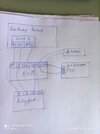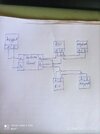Hi guys.
I've been having some faults with a Galaxy Dimension panel (installed March 2018):
- Fault in DualTech detector (onboard RIO 01 zone nr. 1011), on march 2020.
Option 21 showed last 13 days high resistances below 1200 Ohm, but high resistance on the day of the alarm (1296 Ohm). No problems before or since then.
- Alarm with smoke detector (offboard RIO 02 zone nr. 2021) on January 2021, no apparent reason.
Option 21 on the day of the alarm showed last 13 days with resistances OK (989-1036 Ohm), but high resistance on the day of the alarm (994-1296 Ohm). No problems before or since then.
- Aux Tamper Fault, only once, on February 2021, never before and never after. I did nothing to resolve it, it simply never happened again.
Option 21 for last 14 days shows that 8 zones (smoke and DT detectors, these DT are from different brands) register occasional high resistances, almost 1300 Ohm, but normally are OK.
Since these are both onboard zones and offboard (RIO 2 and RIO 3) zones, different detectors, I think it is likely the problem comes from the panel reading the resistances.
Can anyone advise me how to troubleshoot this?
Is it normal to have a high resistance only occasionally?
Thanks for any help.
I've been having some faults with a Galaxy Dimension panel (installed March 2018):
- Fault in DualTech detector (onboard RIO 01 zone nr. 1011), on march 2020.
Option 21 showed last 13 days high resistances below 1200 Ohm, but high resistance on the day of the alarm (1296 Ohm). No problems before or since then.
- Alarm with smoke detector (offboard RIO 02 zone nr. 2021) on January 2021, no apparent reason.
Option 21 on the day of the alarm showed last 13 days with resistances OK (989-1036 Ohm), but high resistance on the day of the alarm (994-1296 Ohm). No problems before or since then.
- Aux Tamper Fault, only once, on February 2021, never before and never after. I did nothing to resolve it, it simply never happened again.
Option 21 for last 14 days shows that 8 zones (smoke and DT detectors, these DT are from different brands) register occasional high resistances, almost 1300 Ohm, but normally are OK.
Since these are both onboard zones and offboard (RIO 2 and RIO 3) zones, different detectors, I think it is likely the problem comes from the panel reading the resistances.
Can anyone advise me how to troubleshoot this?
Is it normal to have a high resistance only occasionally?
Thanks for any help.



